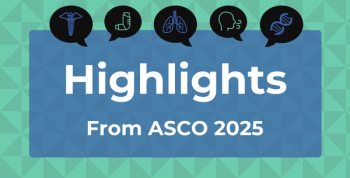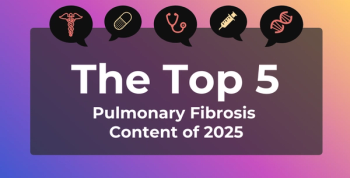
Dr Javed Butler on "the Beauty of SGLT2 Inhibitors"
Whatever your theory of heart failure with preserved ejection fraction, sodium glucose co-transporter 2 (SGLT2) inhibitors seem to be attacking every one, noted Javed Butler, MD, MPH, MBA, University of Mississippi.
Whatever your theory of heart failure with preserved ejection fraction (HFpEF) is—the physiology is really complex—sodium glucose co-transporter 2 (SGLT2) inhibitors seem to be attacking every one of those. And I believe these things work in concert, noted Javed Butler, MD, MPH, MBA, chairman for the Department of Medicine at the University of Mississippi, in an interview for
Butler, a co-lead investigator of the EMPEROR-Preserved trial presented at the ESC Congress, said the study aimed to address 3 questions: (1) time to cardiovascular death and heart failure hospitalization; (2) total heart failure hospitalization, first and recurrent; and (3) renal function preservation in terms of eGFR (estimated glomerular filtration rates). There was a clinically meaningful and statistically significant 21% reduction in the combined primary end point, making this trial the first to show benefit for patients with heart failure with reduced ejection fraction—for which targeted treatments have been hard to pin down.
Transcript
Can you explain the difference in empagliflozin effectiveness for ejection fractions above 50%?
I don't think we can ignore all the previous trials, and we have to look at the new evidence in the light of all the previous trials. What we have learned in the previous trials of HFpEF are a couple of things. One is that most of the other drugs have shown benefit in ejection fraction [of] 55% or less. And also there was a significant sex interaction: that women tended to benefit more, and benefit to a higher ejection fraction level, than men, who benefited less and at a lower ejection fraction. So, that's sort of the background.
Now, if empagliflozin in EMPEROR-Preserved was the first trial ever done, I think that trend that you're talking about in the primary end point with ejection fraction, we probably would have ignored it by saying that, “Oh, it's just noise with little interaction, the P value is completely nonsignificant, and there is nothing there.” Except we don't have these results in isolation. We have this whole history of showing that as ejection fraction goes up, the benefit is less. So, what we did was we have already done a lot of a subgroup analysis to try to sort of understand and tease that signal more.
What we presented [August 27, 2021], or what came out in New England Journal of Medicine, was prespecified analysis that both the journal and everybody holds us to. So that was 41% to 49%, 50% to 59%, and 60%-plus, so that's what we showed. But then the question is, where do these things go? So, we looked at cardiovascular and heart failure hospitalization, heart failure hospitalization, and total heart failure hospitalization. And we looked at it across the ejection fraction spectrum.
The 2 things that we learned are that we are seeing a consistent benefit, and interestingly enough, a consistent benefit with both men and women—so we are not seeing that major sex interaction that we have seen in the trial—all the way up to ejection fraction of 65%. And 65% seems to be the place where there is a deflection point and we don't see the benefit. So, how do you interpret these results?
Well, there are 2 interpretations of that. One is that people with ejection fraction greater than 65% represent 10% of the population. So the benefit, both in men and women, is accrued in 90% of the population that was seen. What about the other 10%? We are, as you might imagine, doing a really deep dive and trying to sort of understand that. So not having looked into it in detail, my bias says that the greater-than-65% represents 2 distinct populations. One is people who had shortness of breath and met the criteria for the trial and came in, but really did not have the syndrome of HFpEF—so maybe they had amyloidosis, maybe they had something else going, advanced CKD [chronic kidney disease]—and then the true HFpEFers, maybe the response was different between the 2 groups and it just all got neutralized.
I don't know what I'm saying is true or not. We have to look into more details. But today, all I can say is that, above 65%, that 10% of the population is where we would not see benefit.
What have we learned about SGLT2 inhibitors’ mechanism of action that produced the results in EMPEROR-Preserved?
Now when the first EMPA-REG [OUTCOME] trial came out in 2015, we really did not know as much. But the past 6 years, there's been such intense research on the pharmacodynamic properties of these drugs that the bigger issue that we are dealing with is the mindset of the clinician that wants a one-on-one link. This happens, and therefore this happened—a straight line. And part of that mindset of a straight line may have been related to the fact that we have not developed as many effective therapies, because the fact is, the physiology of HFpEF is really complex and a whole bunch of organ systems get involved and interact.
The beauty of our SGLT2 inhibitors is that they have cardiac benefit, [so] diastolic dysfunction, fibrosis; a structural and functional cardiac benefit; vascular benefit, [so] aortic stiffness, endothelial function—all the things that are associated with heart failure with preserved ejection fraction pathophysiology. Renal benefit; we know eGFR [estimated glomerular filtration rate] preservation, so sodium and fluid avidity, GFR function. And then the systemic effects on visceral adiposity and the reduction of adiposity related decrease inflammation oxidative stress, which then leads to reduction in neurohormonal activation. Then there are some one-off affects like fatty acid oxidation and low-level ketosis related to better mitochondrial efficiency, improved autophagy.
So if you look at the totality of this, there are many scientists that have their own favorite theory of what HFpEF is. Some people think it's this, some people, it’s that. The beauty of the SGLT2 inhibitor is that you can have whatever theory you have. SGLT2 inhibitors are sort of attaching or attacking every one of those. And it's in concert that these things work, in my opinion.
Newsletter
Stay ahead of policy, cost, and value—subscribe to AJMC for expert insights at the intersection of clinical care and health economics.







































